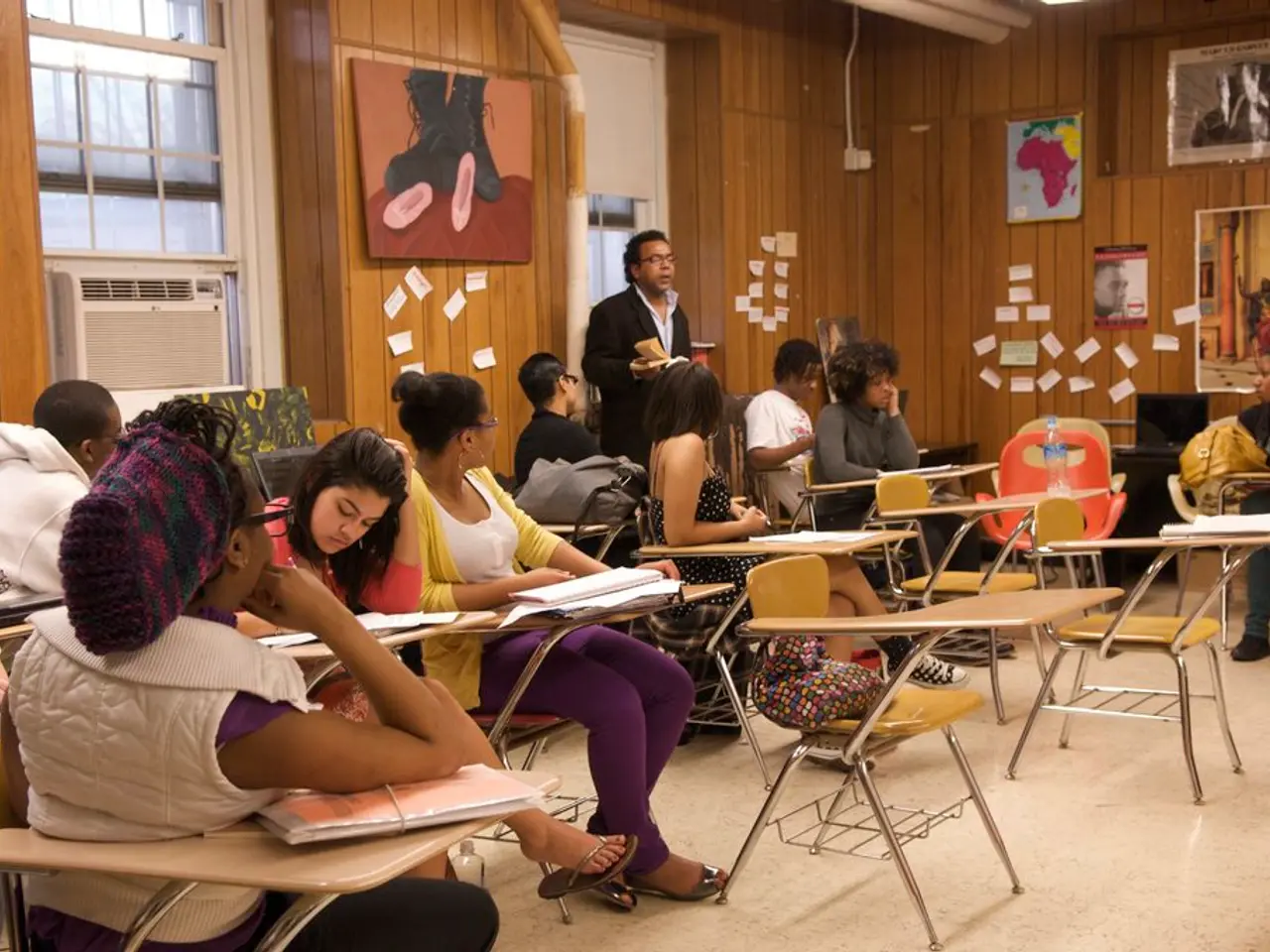Enhancing Feedback on Domestic Academic Tasks for Pupil Progress
In the realm of online education, providing constructive feedback on homework assignments is a crucial aspect of fostering student engagement and promoting deeper learning. Here are some best practices that educators can employ to create a supportive and responsive feedback environment.
Timeliness is Key
Timely feedback is essential in nipping misconceptions in the bud and maintaining student momentum. Aim to return graded assignments within 24 hours, if possible, to address misunderstandings swiftly and keep the learning process moving.
Focus on the Task, Not the Person
Feedback should be specific, task-related, and avoid focusing on personal traits. Comments that target the work rather than the individual help students to understand their mistakes without feeling undermined or discouraged.
Variety is the Spice of Feedback
Using diverse communication methods such as brief written comments, voice notes, or short video explanations can enhance the clarity and personal connection of the feedback. This variety can also help cater to different learning styles.
Encourage Peer Review
Structured peer feedback, where students review each other's work with clear prompts and rubrics, can foster collaboration, critical analysis, and enhance learning.
Maintain Open Communication Channels
Regular live office hours, quick check-ins, and the use of polls can help educators gauge students' understanding in real-time. This open communication fosters a supportive learning environment and encourages continuous engagement.
Leverage Technology
Utilizing platforms like Gradescope and LMS features can streamline feedback delivery, making it more efficient and accessible. These tools also provide opportunities for timely and constructive comments.
Provide Progress Tracking
Sharing dashboards or milestone updates allows students to self-monitor their learning journey, promoting self-reflection and encouragement.
By incorporating these strategies, educators can create a feedback environment that promotes deeper learning, reduces frustration, and minimizes the risk of dropout in online settings.
Alleviating Pressure on Teacher Workload
Streamlining feedback processes, utilizing templates, or focusing on specific areas can help alleviate some of the pressure on teacher workload.
Parental Involvement
Parents can review feedback given on assignments, discuss it with their children, and attend parent-teacher conferences to further enhance student learning outcomes.
Formative and Summative Feedback
Formative feedback, provided during the learning process, allows students to understand their strengths and areas for improvement before final assessments. Summative feedback, given after the completion of assignments, evaluates overall performance.
Balancing Quality and Quantity
Balancing the need for detailed, constructive feedback with the demands of grading numerous assignments can be challenging for educators. However, effective feedback guides students in setting specific, achievable goals in their work.
In a traditional classroom setting, feedback on homework assignments is often delivered in face-to-face interactions, allowing for immediate clarification and dialogue between teachers and students. In online learning environments, feedback on homework assignments is administered through various digital platforms, enhancing communication between educators and students.
Feedback on homework assignments is a crucial component of the learning process, serving as a bridge between assessment and instruction. It allows educators to adjust their teaching strategies based on student performance, fostering a more personalized and effective learning experience. Embracing innovative strategies and technology in the feedback process will significantly enhance the learning experience for both students and educators.
E learning environments provide opportunities for professional development, as educators can explore new methods for delivering feedback to promote education-and-self-development and personal-growth. Timely feedback, focused on the task rather than the person, can help students overcome misconceptions and maintain momentum in their learning journey.
Utilizing platforms like Gradescope and LMS features, along with peer review and open communication channels, can contribute to an effective, supportive, and responsive feedback environment, facilitating deeper learning and fostering a positive learning experience.




